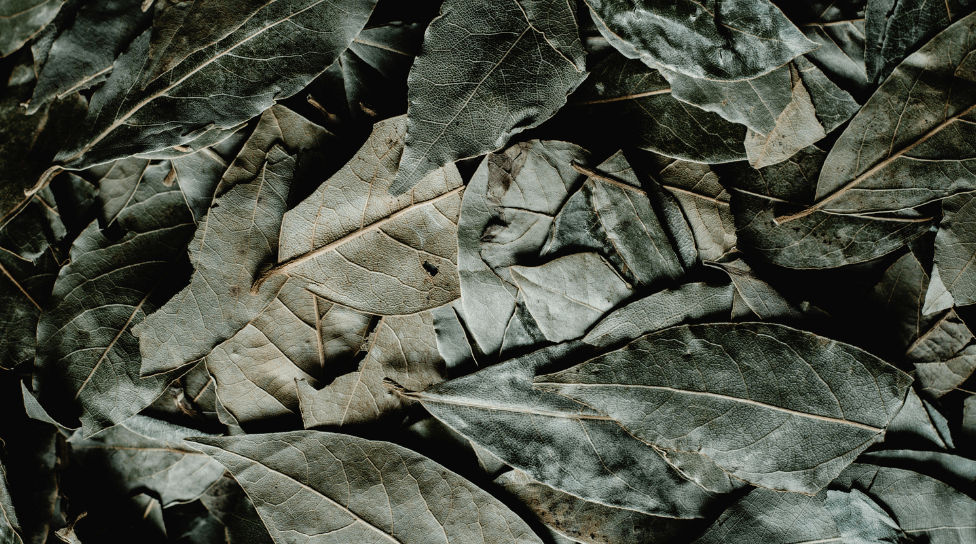Top 6 Benefits: How Bay Leaves Can Transform Your Cooking
Introduction to Bay Leaves
Bay leaves, often overlooked in the realm of culinary ingredients, possess a remarkable ability to elevate dishes with their subtle yet distinct flavor profile. Derived from the bay laurel tree, native to the Mediterranean region, these aromatic leaves have been a staple in kitchens worldwide for centuries. In this article, we delve into the top six benefits of incorporating bay leaves into your culinary repertoire.

1. Enhancing Flavor Profiles
The primary allure of bay leaves lies in their capacity to infuse dishes with a depth of flavor that is both nuanced and robust. When added to soups, stews, sauces, and braises, it impart a subtle, earthy essence that enhances the overall taste profile of the dish. Their aromatic qualities meld seamlessly with other ingredients, creating a harmonious blend of flavors that tantalize the palate.
2. A Natural Preservative
Beyond their flavor-enhancing properties, bay leaves also serve as natural preservatives, helping to prolong the shelf life of perishable foods. Historically, they were employed to preserve meats, grains, and legumes due to their antimicrobial properties. By inhibiting the growth of bacteria and fungi, bay leaves safeguard food from spoilage, allowing for extended storage without compromising taste or quality.
3. Digestive Aid
In addition to their culinary merits, bay leaves boast a range of health benefits, including their role as a digestive aid (1). The compounds found within bay leaves, such as eugenol and cineole, possess carminative properties that help alleviate digestive discomfort and promote gastrointestinal health. Incorporating it into your meals can aid in digestion and soothe common ailments like bloating and indigestion.
Recent studies (1) have highlighted the potential of bay leaves in assisting with blood sugar regulation, making them a valuable addition to diabetic-friendly diets. Research suggests that compounds present in it may help improve insulin sensitivity and regulate glucose levels in the bloodstream. By incorporating bay leaves into meals, individuals may experience more stable blood sugar levels, reducing the risk of fluctuations associated with diabetes.
5. Respiratory Health
The aromatic oils contained within bay leaves possess expectorant properties that can help alleviate respiratory congestion and promote clear breathing. When steeped in hot water to create a soothing herbal tea, bay leaves release volatile compounds that act as natural decongestants, making them a popular remedy for coughs, colds, and respiratory infections.
6. Culinary Versatility
One of the most compelling aspects of bay leaves is their versatility in culinary applications. From savory dishes like soups, stews, and sauces to sweet treats such as custards and poached fruits, they add a layer of complexity and depth to a wide array of recipes. Whether used fresh or dried, whole or ground, impart a distinctive flavor profile that can transform ordinary dishes into culinary masterpieces.
In conclusion, the inclusion of bay leaves in your culinary endeavors offers a myriad of benefits, ranging from enhanced flavor profiles and natural preservation to digestive support and respiratory health. By harnessing the power of these aromatic leaves, you can elevate your cooking to new heights while reaping the numerous health advantages they afford.
Expert Cooking Tips for Home Chefs:
- Infuse Flavor in Soups and Stews: Bay leaves are renowned for their ability to infuse dishes with a subtle, earthy flavor. Add a couple of them to your soups, stews, or broths during the cooking process to impart a rich depth of flavor that enhances the overall taste profile of the dish.
- Enhance Rice and Grain Dishes: When cooking rice, grains, or pilafs, consider adding a bay leaf to the pot. The aromatic qualities of bay leaves will permeate the grains as they cook, adding a fragrant note that complements a wide range of savory dishes.
- Marinades and Brines: Incorporate some into marinades and brines to infuse meats, poultry, and seafood with an extra layer of flavor. Crushed or torn them release their essential oils more effectively, imparting a robust aroma and taste to your favorite proteins.
- Aromatics in Sauces and Gravies: When preparing sauces, gravies, or reductions, simmer bay leaves along with other aromatics like onions, garlic, and herbs. It contribute depth and complexity to the sauce, enhancing its overall richness and flavor profile.
- Slow-Cooking and Braising: Bay leaves are particularly well-suited for slow-cooking and braising methods. Add them to braised meats, hearty casseroles, or slow-cooker dishes to allow their flavors to meld and intensify over time, resulting in tender, flavorful dishes with minimal effort.
- Herbal Infusions and Teas: Create aromatic herbal infusions and teas by steeping dried bay leaves in hot water. Bay leaf tea is known for its soothing properties and is often enjoyed as a digestive aid or a natural remedy for respiratory congestion.
- Storage and Freshness: Store in a cool, dry place away from direct sunlight to maintain their freshness and flavor potency. Consider storing them in airtight containers or resealable bags to prolong their shelf life and preserve their aromatic qualities.
- Experiment with Pairings: Don’t hesitate to experiment with different flavor pairings to complement the subtle nuances of bay leaves. Combine them with other herbs and spices such as thyme, rosemary, oregano, and black pepper to create custom seasoning blends tailored to your taste preferences.
- Remove Before Serving: Remember to remove bay leaves from dishes before serving, as they are intended to impart flavor during the cooking process rather than being consumed whole. Discard them after cooking to prevent any undesirable texture or bitterness in the final dish.
- Fresh vs. Dried: While both fresh and dried bay leaves can be used in cooking, they are more commonly available and have a longer shelf life. However, if you have access to fresh-ones, they can impart a more vibrant and intense flavor to your dishes.
Incorporating these cooking tips into your culinary repertoire will help you harness the full potential of bay leaves and transform your dishes into culinary masterpieces bursting with flavor and aroma.
Storage tips:
- Air-Tight Container: Store it in an air-tight container to prevent exposure to moisture, which can cause them to lose flavor and aroma.
- Cool, Dark Place: Keep the container in a cool, dark place away from direct sunlight. Sunlight can degrade the essential oils in the leaves, affecting their quality.
- Dry Environment: Ensure that the storage area is dry and free from humidity. Moisture can lead to mold growth and spoilage.
- Avoid Heat Exposure: Avoid storing near heat sources such as stoves or ovens. Heat can accelerate the deterioration of the leaves and diminish their flavor potency.
- Use Sealable Bags: If you have bay leaves that come in a bag or packaging, consider transferring them to a sealable plastic bag before placing them in the container for added protection against moisture.
- Check for Freshness: Periodically check the leaves for freshness. If they start to lose their vibrant green color or develop a musty odor, it’s time to replace them with fresh ones.
- Mark and Date: Name the holder with the date of procurement or the date when you put away the sound leaves. This assists you with monitoring their newness and guarantees you use them within a sensible time span.
- By following these storage tips, you can prolong the shelf life of these leaves and retain their flavor and aroma for use in your culinary creations.
Allergies
Bay leaves are generally considered safe for consumption and are not known to cause allergic reactions in most people. However, like any food ingredient, there is a possibility of allergic reactions, although they are rare.
For individuals with specific allergies, particularly those with sensitivities to plants in the Lauraceae family, such as bay laurel (from which bay leaves are derived), there may be a risk of allergic reactions.
Symptoms of allergic reactions can vary and may include:
- Skin Irritation: Some individuals may experience skin irritation, such as itching, redness, or hives, upon contact.
- Respiratory Symptoms: Inhaling particles may trigger respiratory symptoms in sensitive individuals, such as coughing, wheezing, or shortness of breath.
- Digestive Issues: Ingesting may lead to gastrointestinal symptoms in some people, including stomach pain, nausea, or vomiting.
It’s important to note that allergic reactions to bay leaves are relatively uncommon. However, individuals with known allergies to plants in the Lauraceae family should exercise caution and consult with a healthcare professional before consuming bay leaves or dishes containing bay leaf as an ingredient.
If you suspect you have a bay leaf allergy or experience any adverse reactions after consuming bay leaves, seek medical attention promptly. An allergist can perform allergy testing to determine if you have a specific allergy to bay leaves or related substances and provide guidance on managing your condition.
As always, it’s essential to read food labels carefully and inquire about ingredients when dining out to avoid potential allergens and ensure your safety.
Conclusion
Bay leaves, with their aromatic fragrance and subtle flavor, are an indispensable herb in kitchens around the world. From Mediterranean classics to exotic Indian dishes, bay leaves add depth and character to a variety of culinary creations. Embrace the versatility in your cooking and elevate your dishes with their distinctive aroma and flavor.
